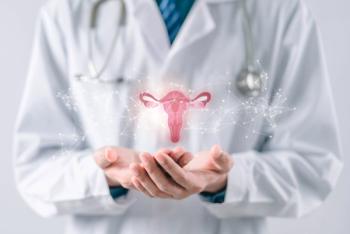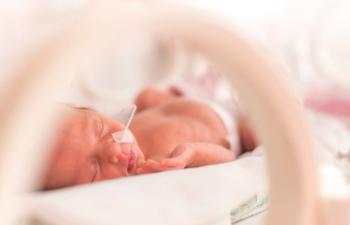
Healthy childhood diet linked to later menstruation onset
New research shows that girls who eat healthier during childhood may start their periods later, potentially lowering their risk for chronic diseases such as diabetes and breast cancer.
The odds of starting menstrual periods later are increased among girls with a healthier diet during childhood, according to a recent study published in Human Reproduction.1
Health risks tied to early menstruation
As women with periods beginning earlier in life are at an increased risk of diabetes, breast cancer, obesity, and heart and blood vessel diseases, these findings have implications for long-term health outcomes. Additionally, body mass index (BMI) and height do not influence the association, despite being linked to menstruation earlier in life.
“I think our findings highlight the need for all children and adolescents to have access to healthy meal options, and the importance of school-based breakfasts and lunches being based on evidence-based guidelines,” said Holly Harris, MPH, ScD, study lead and associate professor at the Fred Hutchinson Cancer Center.
Dietary assessment and scoring methods
The prospective cohort study was conducted to evaluate the association of the Alternative Healthy Eating Index (AHEI) and Empirical Dietary Inflammatory Pattern (EDIP) with menses onset in premenarchal girls.2 Participants were aged 9 to 14 years at baseline and completed follow-up questionnaires every 1 to 3 years.
A self-administered 132-item food frequency questionnaire (FFQ) was used to evaluate diet in older children and adolescents. Questions included the average frequency of consumption for a specified food, with nutrient intake measured by multiplying a food or drink’s nutrient content by the frequency it was consumed.
AHEI scoring was based on the intake levels for its components, which included fruits, vegetables, whole grains, sugar-sweetened beverages, nuts and legumes, red and processed meats, trans fat, long-chain fatty acids, polyunsaturated fatty acids, and sodium. Component scores ranged from 0 to 10, with higher scores indicating met recommendations.
EDIP included 39 pre-defined food groups assessed to determine the overall inflammatory potential of whole diets based on 3 plasma inflammatory markers. These markers had positive associations with processed meat, red meat, organ meat, fish, other vegetable, refined grain, high- and low-energy beverage, and tomato consumption.
Menarche Tracking and study population
The questionnaires included items asking participants whether their periods had begun. Those who had begun menstruation also reported their age in years and calendar month at initiation. Covariates included physical activity, inactivity, height and weight, and frequency of eating dinner as a family.
The baseline FFQ was completed by 7530 participants, 93% of whom reported menarche during the study period. Participants completed the baseline FFQ a mean 1.75 years before menarche and were aged a median 13.1 years at menarche.
Reduced physical activity, reduced BMI, and more family dinners were reported in patients with higher AHEI scores at baseline. In comparison, increased physical activity and BMI were reported in patients with higher baseline EDIP scores.
Diet scores and menarche timing
The odds of menarche within the next month were 8% lower in premenarchal patients in the highest quintile of AHEI scores vs the lowest quintile. This association remained following adjustments for BMI and height, with a hazard ratio (HR) of 0.93.
In comparison, the odds of menarche in the next month were 15% higher in participants of the highest EDIP quintile vs the lowest quintile. After adjustment, the HR for this association was 1.15. Effect estimates did not significantly change when including patterns for both AHEI and EDIP scores in a regression model.
Having achieved menarche at an earlier age was 16% less likely in participants in the lower 2 BMI quintiles, most adherent to AHEI vs those with the lowest AHEI scores. AHEI score was not linked to menarche attainment in the highest 2 BMI quintiles, but this interaction was not statistically significant.
Conclusions and implications
The link between EDIP and age at menarche also did not change when stratified by BMI. These results indicated a link between AHEI adherence and later menarche, as well as between EDIP and earlier menarche.
“Given that earlier age at menarche is associated with multiple later life outcomes… this may be an important period for the reduction in chronic disease risk,” wrote investigators.
References
- A healthy diet in childhood is linked to starting menstrual periods later, regardless of BMI or height. May 6, 2025. Accessed May 7, 2025.
https://www.eurekalert.org/news-releases/1082462 - David CP, Fest S, Cushing-Haugen K, Kensler TW, Chavarro JE, Harris HR, Dietary patterns and age at menarche in a prospective study of girls in the USA. Human Reproduction. 2025. doi:10.1093/humrep/deaf072
Newsletter
Get the latest clinical updates, case studies, and expert commentary in obstetric and gynecologic care. Sign up now to stay informed.










